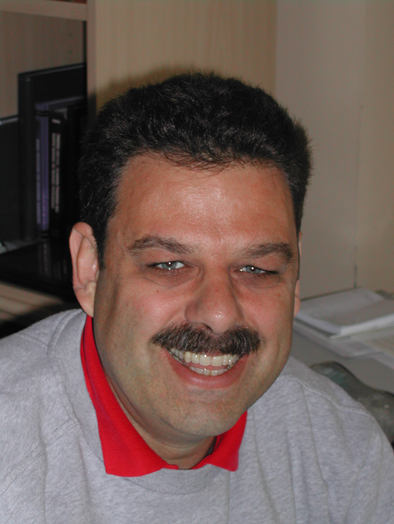 systems
systemsControl of
distributed-information nonlinear stochastic systems
systems
Prof. Thomas Parisini, University of Trieste
In engineering and economic systems, many situations may occur, in which a process is influenced by the presence of several decision makers (DM). Different degrees of cooperation and different degrees of distribution of available information among the decision makers are possible.
In this lecture, we consider the case where various DMs share different information patterns but they make decisions aimed at the accomplishment of a common goal, i.e., the minimization of the same cost functional. Such an organization can be accurately described within the well known framework of ``team theory''. Typical examples of team organizations can be encountered in: communication and computer networks extending in large geographical areas where several routing nodes cooperate on the overall performance; large-scale traffic systems when a metropolitan area is divided into relatively independent sectors; large-scale freeway systems; production plants in which mobile robots moving semi-finished products have to be coordinated; geographically distributed systems for the production of electrical energy; etc.
A general approach to the solution of a team optimal decision problem has not yet been presented in the literature. Therefore, in this lecture we give up looking for optimal solutions to a general team optimal control problem, and propose a technique to obtain suboptimal (but approximate to any degree of accuracy) solutions. This is accomplished by constraining the control functions to take on a fixed structure with a certain number of ``free'' parameters to be optimized according to the Extended Ritz Method (ERIM). Among the various possible fixed-structure functions, feedforward neural networks are chosen for their powerful approximation capabilities and because these functional structures allow for a simple distributed computation of the local control strategies by stochastic approximation techniques. The neural control methodology is worked out on two important benchmark problems. A simple team within the LQG framework is first considered, where two decision makers with scalar information are present. When the problem admits a known optimal solution, our approach has demonstrated to be able to approximate it. Quite satisfactory results were obtained also in a case (the well-known Witsenhausen counterexample) where the optimal solution has not yet been found (it is however known that it exists). Then, dynamic routing in communication networks is considered. A nonlinear discrete-time dynamic model is given for a store-and-forward packet switching network in which the routing nodes play the role of cooperating DMs of a team. The resulting problem does not verify either the LQG hypotheses or the partially nestedness assumption on the information structure. The ERIM has demonstrated to be effective also in this application.
Prof. Thomas Parisini received the ``Laurea'' degree (Cum Laude and printing
honours) in Electronic Engineering in 1988 and the Ph.D. degree in Electronic
Engineering and Computer Science in 1993 both from the University of Genoa. He
was with Politecnico di Milano as associate professor and in 2001 he was
appointed full professor and Danieli Endowed Chair of Automation Engineering at
the University of Trieste.
Thomas Parisini is the Chair of the IEEE Control Systems Society Conference
Editorial Board. He was the Chair of the Technical Committee on Intelligent
Control and an appointed member of the Board of Governors of the IEEE Control
Systems Society. He is a Distinguished Lecturer of the IEEE Control Systems
Society. He is the co-recipient of the 2004 Outstanding Paper Award of the IEEE
Trans. on Neural Networks.
Thomas Parisini is currently serving as an Associate Editor of Automatica, of
the Int. J. of Control, and as Subject Editor of the Int. J. of Robust and
Nonlinear Control and served as Associate Editor of the IEEE Trans. on Automatic
Control, of the IEEE Trans. on Neural Networks, and as Subject Editor of the
Int. J. of Adaptive Control and Signal Processing. He was also the Guest Editor
of two special issues in the IEEE Trans. on Neural Networks.
He was involved in the organization and in the technical program committees of
several IEEE CSS sponsored conferences including the IEEE Conf. on Decision and
Control and the IEEE Conf. on Control Applications. In particular, he was
Vice-Program Chair of the 2003 IEEE Conf. on Decision and Control, 2003 and he
was recently appointed as Program Chair of the 2008 IEEE Conf. on Decision and
Control.
His research interests include neural-network approximations for optimal control
and filtering problems, fault diagnosis for nonlinear systems, hybrid control
systems and control of distributed systems. He is also involved as Project
Leader in several projects funded by the European Union, by the Italian Ministry
for Research and by some major process control companies (ABB, Danieli, Duferco,
Galileo Avionics among others).